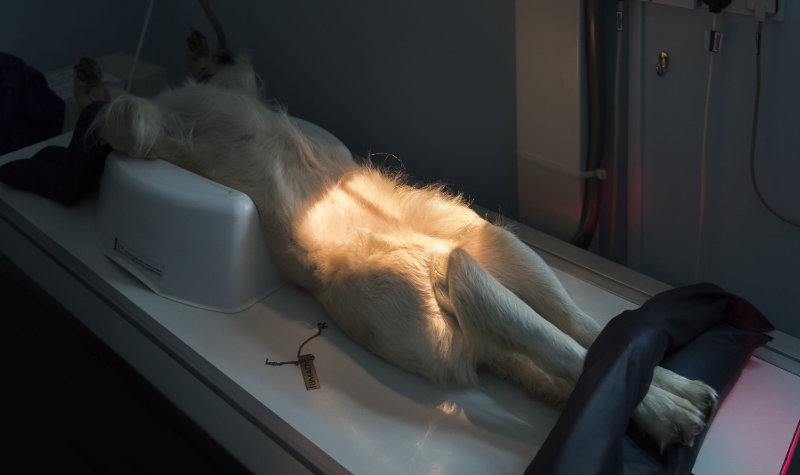“Hip scoring” is a really common phrase used in dog breeding circles. It is particularly common in purebred breeding as ‘bad hips’ unfortunately affecting some breeds more than others.
So what is it?
Hips are a ball and socket joint. Basically, if the ball doesn’t fit the socket properly, or is too loose, there is instability in the joint. Instability can lead to pain in the short term and arthritis in the long term (which reduces function as well as causing pain). Arthritis is sometimes called ‘secondary changes’. Hip arthritis is one of the most common debilitating conditions of our pets as they age.
Hip scoring aims to give an idea about how stable a dog’s hips are. This gives us an idea of two things:
- How likely it is that this particular dog will develop arthritis as it gets older
- If the dog is intended for breeding, will it’s offspring have hip problems?
Canine hip dysplasia (“bad hips”) is highly heritable so we know that dogs that have hip problems will produce offspring that also have hip problems. We want to avoid this.
Ok then, what’s involved?
Regardless of the hip scoring method used, radiographs (x-rays) under general anaesthetic (dog is fully asleep) are required. There are two main methods of hip scoring:
Australian National Kennel Council (ANKC):
This scoring method is an older scoring method, based on scoring of 9 different qualities of each hip joint – a score is then generated for each joint (left and right). The x-rays must be taken at or after 1 year of age. Whilst it is useful, unfortunately the majority of the qualities assessed rely on secondary changes; the damage has to already have been done. This means that young dogs may score reasonably well, even if, in the long term, they are destined to develop problems. You can see that this is a problem – we might breed a dog at, say, 18 months of age, when their hips looked OK on x-rays (no secondary changes had occurred). The same dog may have a much worse score at 3 years of age purely because time has gone on (the dog was always going to get arthritis!).
PennHIP:
This stands for Pennsylvania Hip Improvement Program – it was designed at the University of Pennsylvania. This system gives a much better idea of a dog’s long-term hip health because it measures true laxity (how loose the hip is). This scoring can be performed from 16 weeks of age which gives a lot earlier information about whether it is a dog that owners would like to breed from. PennHIP requires accreditation and the good news is, we have two accredited veterinarians at Stabler & Howlett, Drs Al Grant and Ashleigh Fisher, which means we’re always able to submit these for scoring.
The aim of hip scoring is to have an idea of what our dogs have in store for them as they get older and also to try and improve the hips of all of the generations of puppies to come. It is a very valuable test to have done and we are pleased to provide multiple options.
My dog has been diagnosed with Canine Hip Dysplasia (or ‘bad hips’) – what can I do?
Whilst we can’t change our dogs’ genetics, there are lots of things we can do to reduce the effects of having Canine Hip Dysplasia. The most important, by far, is to keep our dogs lean and fit. We are more than happy to provide broader advice on supporting your pets so please feel free to give us a call any time. We want to make sure that you are able to enjoy quality time with your pet for as long as possible and every little hint helps!








